‘Let’s Be Old-Fashioned’: Remembering Gore Vidal
When, exactly, to give him the bad news? Before our interview? That would spoil the conversation. Lunch would be best. But when, exactly? Before the first course, during the meal, or ought I to delay until dessert?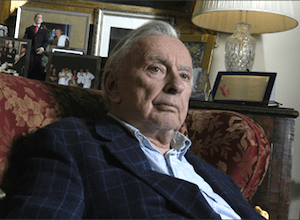
See a collection of Truthdig’s work published by and on Gore Vidal here. This piece first appeared on Steve Wasserman’s Facebook page.
A year ago, Gore Vidal died. I first met him in 1979 in Los Angeles while working as an editor of the Los Angeles Times Sunday Opinion section. We took an immediate liking to each other and he began writing for me, more I always thought out of a lifelong compulsion to irritate the New York Times, which he’d long been convinced had had it in for him, than for any particular affection for the Los Angeles Times. Over the years, he became something of an Auntie Mame figure for me, giving me pep talks at Patrick Terrail’s fashionable restaurant, Ma Maison, where we would sometimes meet for dinner, encouraging me to lead as wide and as fruitful a literary life as talent and ambition would permit. We saw each other from time to time at his Hollywood home on Outpost Drive, in New York at the Plaza Hotel, and once at New Year’s in Venice at the Hotel Palace Gritti, where he complained that Susan Sontag and he were the only American writers of any distinction that Bob Silvers would publish in the pages of the New York Review of Books.
Years later, I became editor of the Los Angeles Times Book Review. Gore’s 1999 novel, “The Smithsonian Institution,” was about to be published. It was a modest entertainment, a satire in the manner of “Duluth” and “Myra Breckinridge.” I thought it an occasion to publish a lengthy consideration of Gore’s overall achievement as one of America’s foremost men of letters. Artwork suitable for using on the front page was commissioned and we chose a suitable reviewer.
Vidal was set for a book tour and his publisher asked that I be his interlocutor at a nationwide Pacifica Radio station hook-up to take place before a live audience at the Beverly Hills-based Museum of Television and Broadcasting. Afterward, we’d have lunch, just the two of us, at the Polo Lounge at the always congenial Beverly Hills Hotel. I agreed. The interview was set for Monday morning. I also planned to accompany him the following day to the Bay Area where a similar conversation with Christopher Hitchens would take place before several thousand people at the Berkeley Community Theatre, followed by an intimate dinner at Chez Panisse.
Meanwhile, over the weekend, the review came in. The reviewer was at pains to admire the life and much of the previous work, but as to the current book, alas, the judgment was negative in the extreme.
What to do? The only principle I’d sworn to uphold when I accepted the post was to never reveal, before publication, the nature of a review or the identity of the reviewer. The paper’s readers, I felt, deserved to be the first to know.
But all rules are made to be broken. In this instance, I felt fidelity to friendship trumped professional conceit. I would publish the review, as written, of course, but decided that if there was bad news–as indeed there was–I owed it to Vidal that, at the very least, I should be the one to tell him. To say nothing would risk Gore’s fury and he was not a man to be lightly crossed; he’d go around the world warning his innumerable friends and acquaintances to beware of the shameless Wasserman who would go to great lengths to flatter you during the week and then slip in the stiletto just when you least expected it.
But when, exactly, to give him the bad news? Before our interview? That would spoil the conversation. Lunch would be best. But then, I thought, when, exactly? Before the first course, during the meal, or ought I to delay until dessert?
Drinks were brought. I thought now’s the chance, bite the bullet and be done with it. I happened to glance sideways at another table. There, in all his mummified glory, sat Charleton Heston, Vidal’s great nemesis. “Don’t look now, ” I said, “but there’s Ben-Hur eating his spinach.” Vidal, not missing a beat, said: “Oh, Steve, it’s the Polo Lounge, the La Brea Tar Pits of Hollywood. It’s where all us dinosaurs go to die.”
Our salads arrived. I put down my fork, looked up at Gore, and felt my face rearranging itself like a Cubist painting. “I can’t go on a moment longer,” I said, “without first telling you that I’ve got good news and bad news.”
“Let’s be old-fashioned: first, the good news,” he said.
“Well, the good news is we’re running a full-page review with a marvelous illustration.”
“And the bad news?”
“Our reviewer loves the life and admires many of the past books. As to this particular book, however, not at all.”
“And where does the bad news come? Is it in the lede? Or the last paragraph?”
“The penultimate graph, as a matter of fact.”
Gore cracked a slight grimace of a smile. “Steve, Steve,” he said, “it’s all good news. In reviewery, as in real estate, it’s all location, location, location. No one reads these things all the way through, only the top and bottom. Relax, it’s all good.”
He paused and then said: “And your reviewer? A man or a woman?”
“A woman, as it happens.”
He shook his head sadly. “Steve, Steve, never give such a book to a woman. They have no ear for irony.”
Your support matters…Independent journalism is under threat and overshadowed by heavily funded mainstream media.
You can help level the playing field. Become a member.
Your tax-deductible contribution keeps us digging beneath the headlines to give you thought-provoking, investigative reporting and analysis that unearths what's really happening- without compromise.
Give today to support our courageous, independent journalists.
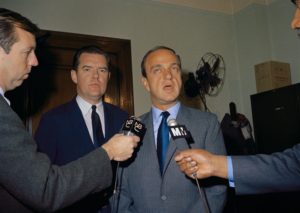
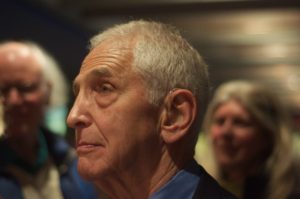

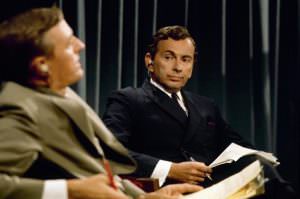

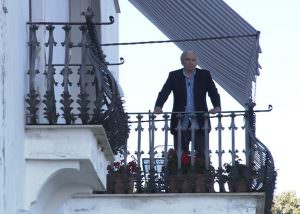
You need to be a supporter to comment.
There are currently no responses to this article.
Be the first to respond.